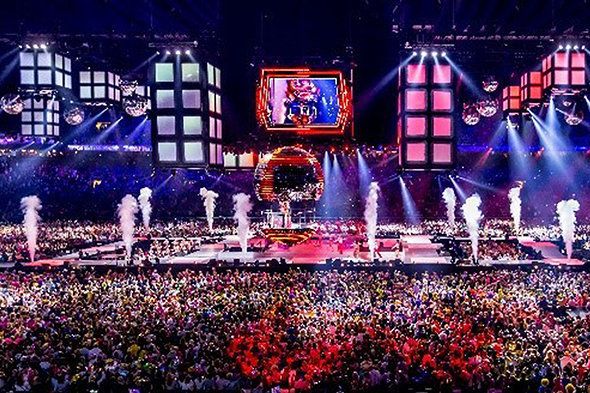The foundations of sport may be well established, but they are shifting.
How else do you account for 50 000 people rocking up for an exhibition tennis event, or 30 000 dressing in pink for a cricket international?
A common refrain is that South Africans no longer have the appetite for live sport, as evidenced by diminishing crowds at Super Rugby, domestic soccer and local cricket. Pictures of empty stadiums abound on social media and people wring their hands about what’s to be done.
Meanwhile, management engage in brainstorming. Kids’ areas, such as in Durban, are established. Greater fan interaction is encouraged. Elsewhere, entrance fees are waived altogether, as was the case with the under-19 Cricket World Cup. Everyone is desperate to find the secret sauce that helps make a stadium pump.
One key lies in the events themselves. A month ago, almost 50 000 fans attended Vodacom Super Hero Sunday in Soweto. Supporters dressed up, the crowd went wild and the teams adopted a high-octane approach.
 Some years ago, the most enjoyable event on the local sports calendar, now sadly consigned to history, was the Proteas versus Springboks cricket match. Cape Town and Joburg took turns hosting the day and it was hugely popular.
Some years ago, the most enjoyable event on the local sports calendar, now sadly consigned to history, was the Proteas versus Springboks cricket match. Cape Town and Joburg took turns hosting the day and it was hugely popular.
There was full-bore cricket on display – elite athletes are ultra-competitive in any sphere – and the sheer novelty of the contest made the action compelling.
What these activities have in common is that they are largely stand-alone events, unrestricted by tradition or the usual strictures. “Pink Day”, which I attended, was elevated as part of a series to a one-off charity event that encouraged enjoyment. If 50 percent of the crowd was there for the cricket alone, it was a lot. For the rest, it was a social occasion replete with gin and tonics and silly outfits. To them, the cricket was incidental.
Two days before, “The Match in Africa” was a grand spectacle, but you’d be mistaken assuming it was sport. It was entertainment masquerading as sport, a novelty occasion that had more to do with the cult of celebrity than the depth of the contest.
It helps of course when Roger Federer and Rafael Nadal come to town, but someone must pull these things off and South Africans tend to do such things efficiently and without fuss.
Fans got their money’s worth, a chunk of cash was raised for charity and South Africa gained some much-needed goodwill, displacing, for a moment, the grim reality of load-shedding and other attendant problems.
It’s within these events where the solutions to public apathy and indifference are to be found. It’s no longer enough to have a regulation contest. Fans demand more, or at least enough to disengage them from their phones for an hour or two to make the effort to buy tickets and drive to a game.
If the product isn’t spellbinding, you’re already in trouble, especially in an age when winning, which used to be the best marketing of all, is no longer enough. The answer lies in a vibrant blend of entertainment and relevance, in novelty and convenience.
It’s a tough ask in an economy such as ours, but as the aforementioned events have proved, South Africans will respond provided what you’re offering tugs on our emotions and demands to be seen. – © Sunday Tribune

